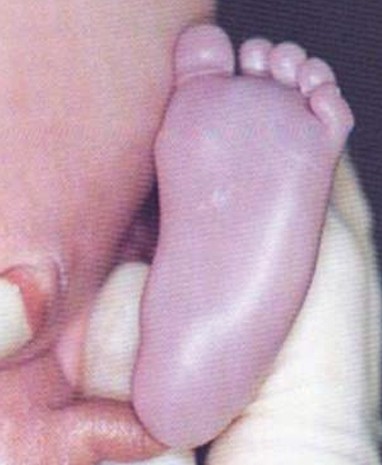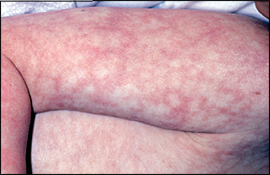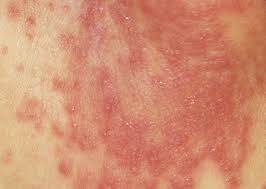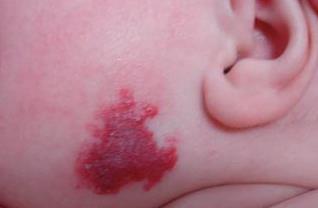Baby skin color change is often just a normal part of infancy. It depends on the color of the skin and whether your baby has any underlying health issues. Most of the reasons of discolored skin in babies are very harmless and may come and go depending on the situation. There are a few causes that may need to be checked by your baby’s doctor. This article outlines some of the causes and what to do about them.
Causes of Baby Skin Discoloration
Here are some of the reasons you may see discolored skin in baby. While this is not intended for diagnosis, it may help you understand some of the reasons you see skin color changes in your baby. A few of the most common causes include:
1. Acrocyanosis
 Acrocyanosis is a type of cyanosis that causes the skin to turn blue. In newborns, the circulatory system can take hours to days to fully develop. This is a benign condition in healthy infants and clears up after the first 48 hours. It is caused by the blood vessels remaining constricted after birth and less oxygen reaching the hands and feet.
Acrocyanosis is a type of cyanosis that causes the skin to turn blue. In newborns, the circulatory system can take hours to days to fully develop. This is a benign condition in healthy infants and clears up after the first 48 hours. It is caused by the blood vessels remaining constricted after birth and less oxygen reaching the hands and feet.
Symptoms: Blue discoloration to the hands, feet, lips and face. There are usually no other symptoms in a healthy child.
2. Skin Mottling
 You may notice a mottled appearance to your baby’s skin. This happens when your baby’s skin is cold. It is caused by the blood flow to the skin diminishing. This is a normal condition in babies and can even happen to adults. Mottling can also happen when your baby is running a fever. Babies have an immature sympathetic nervous system that causes the blood to travel to the inside of the body and away from the skin. The condition usually clears up after warming your baby or their fever breaks.
You may notice a mottled appearance to your baby’s skin. This happens when your baby’s skin is cold. It is caused by the blood flow to the skin diminishing. This is a normal condition in babies and can even happen to adults. Mottling can also happen when your baby is running a fever. Babies have an immature sympathetic nervous system that causes the blood to travel to the inside of the body and away from the skin. The condition usually clears up after warming your baby or their fever breaks.
Symptoms: Mottling gives the skin a marbled appearance. Some areas are reddened in a vein like pattern, while other areas are white or patchy.
3. Ringworm/Fungal Infection
 Worried about baby skin discoloration? It could be ringworm. Ringworm isn’t actually a worm, but a fungal infection of the skin. It is caused by excessive moisture and warmth increased areas. This is a common cause of diaper rash since babies spend a lot of time in moist diapers.
Worried about baby skin discoloration? It could be ringworm. Ringworm isn’t actually a worm, but a fungal infection of the skin. It is caused by excessive moisture and warmth increased areas. This is a common cause of diaper rash since babies spend a lot of time in moist diapers.
Symptoms: Red patches on the skin, itching, pain, and a white yeasty discharge on the skin. There may also be a yeasty odor.
4. Hives
 Hives is a red raised rash that appears quickly and spreads after exposure to an allergen. It’s an immune system reaction to foods or external allergens that the body is sensitive to. Babies can be sensitive to many different types of foods, perfumes, and dyes due to an immature immune system.
Hives is a red raised rash that appears quickly and spreads after exposure to an allergen. It’s an immune system reaction to foods or external allergens that the body is sensitive to. Babies can be sensitive to many different types of foods, perfumes, and dyes due to an immature immune system.
Symptoms: Red welts on the skin that spread, itching, nasal congestion, and possible stomach upset (vomiting, abdominal pain, and/or diarrhea).
5. Newborn Rash
 Baby acne and erythema toxicum are a type of newborn rash where the cause isn’t completely clear. Some researchers think it is residual hormones passed into the baby by the mother. The rash appears shortly after birth and can remain up to 2 to 3 months of age. There may also be bumps on the nose, which are caused by blocked oil glands.
Baby acne and erythema toxicum are a type of newborn rash where the cause isn’t completely clear. Some researchers think it is residual hormones passed into the baby by the mother. The rash appears shortly after birth and can remain up to 2 to 3 months of age. There may also be bumps on the nose, which are caused by blocked oil glands.
Symptoms: Fine bumps that feel like sandpaper, small pimples with a white or yellow center, red blotchy patches that appear irregular as well as small red bumps on the chest, back, or face.
6. Eczema
 Your baby skin discoloration could be due to eczema. Babies with fair skin tend to be sensitive to allergens both ingested and that come in contact with the skin. While it isn’t always an allergy (but it can be) it is a reaction to a trigger. Eczema can also be triggered by dry skin.
Your baby skin discoloration could be due to eczema. Babies with fair skin tend to be sensitive to allergens both ingested and that come in contact with the skin. While it isn’t always an allergy (but it can be) it is a reaction to a trigger. Eczema can also be triggered by dry skin.
Symptoms: Red bumps on the face, neck, chest, backs of arms and thighs, itching, as well as open and oozing areas on the skin.
7. Strawberry Nevus
 A strawberry nevus is actually a red colored birthmark. These are caused by blood vessels that have grouped together near the surface of your baby’s skin. They may show up at birth, or can show up anytime up to a few months of age. These red patches are harmless, but if they persist your child’s doctor may check them if they get larger or develop changing borders. Most of these fade by the time your child reaches puberty, but some may be life-long.
A strawberry nevus is actually a red colored birthmark. These are caused by blood vessels that have grouped together near the surface of your baby’s skin. They may show up at birth, or can show up anytime up to a few months of age. These red patches are harmless, but if they persist your child’s doctor may check them if they get larger or develop changing borders. Most of these fade by the time your child reaches puberty, but some may be life-long.
Symptoms: A red flat spot on the buttocks, back, chest, face, or even the scalp area. Some may be in a depressed area of skin and some have even been found to be slightly raised. The deeper the birthmark, the darker the color. Some even appear blue.
What Parents Can Do?
When it comes to baby skin discoloration, don’t worry. There’re ways that can help to bring some relief.
- For birthmarks like strawberry nevus, there is no treatment and they usually fade on their own. If they grow larger and are persistent, doctors may place the child on beta blocker medications or surgically remove them.
- For acrocyanosis, keep baby’s hands and feet warm the first couple of days. Exposure to cold may worsen the blood vessel constriction. It isn’t necessary to do anything and the sympathetic nervous system will begin to shunt blood flow into these areas on its own.
Home remedies may be effective for newborn rashes and include:
- Using fragrance and dye-free products. Baby skin is very sensitive. If you notice a rash that doesn’t clear up, try switching baby wash, lotion, and laundry soap to a fragrance and dye-free version.
- Trying a thick eczema cream. Dry skin can cause baby’s skin to appear red and rashy. You may even notice peeling. Try using a good quality very thick eczema cream on any problem areas.
- Warming baby up. You will most often notice skin mottling after you give baby a bath. Make sure you bundle baby up after you take them out of the tub. If you notice mottling any other time, wrap them up and hold them close to your own body. Make sure you keep baby’s room at steady 68 degrees.
- Try a food challenge. If you notice baby’s skin turning color or getting rashy after eating certain foods, you may need to take them away for a few days and try them again at a later time. Babies can react to foods on the first few tries until their body adjusts, or if it happens repeatedly, they may have a true food allergy.
When to See a Doctor
If you notice your baby’s skin turning red suddenly and/or developing red raised welts, you should contact a doctor right away. This may be an allergic reaction and can be life threatening. You will need to have a doctor’s advice on how much antihistamine medication to give if this is a first allergic reaction. Also, if you notice your baby is turning blue, immediately call for emergency medical help.

